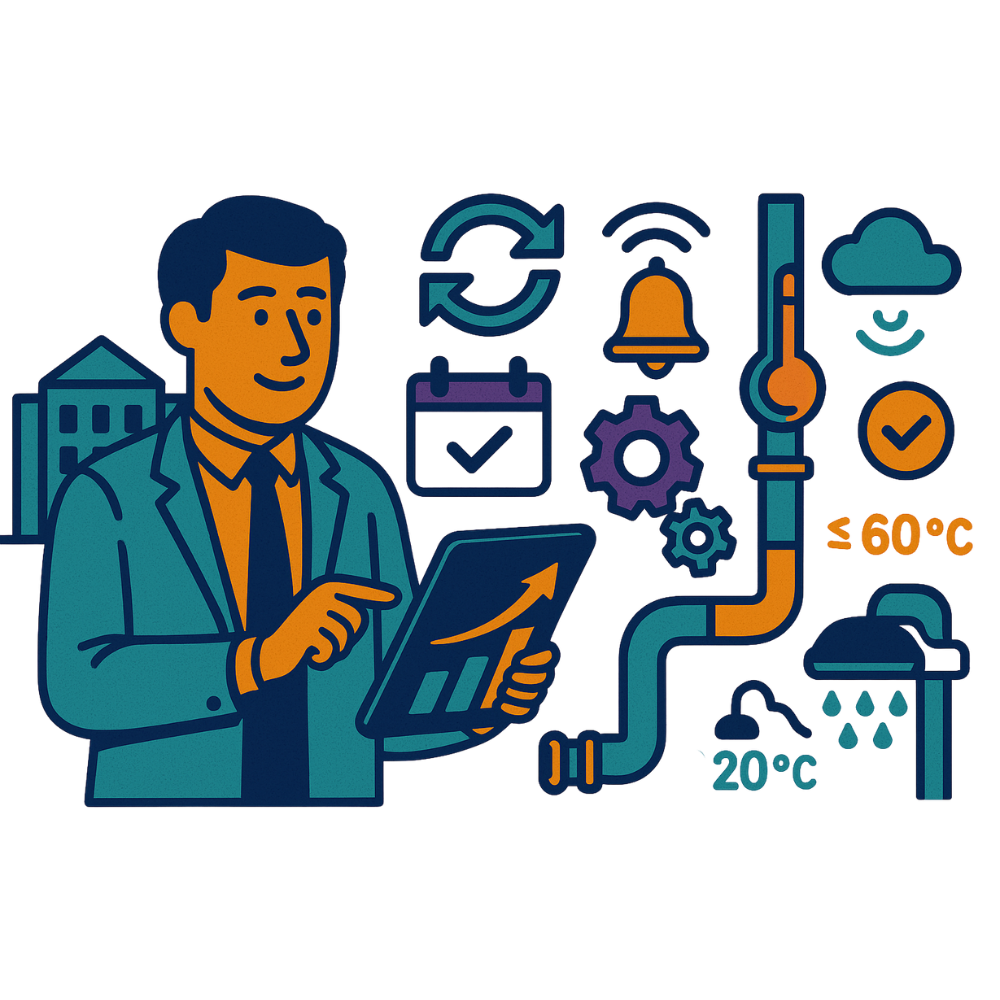Legionella control in hospitality: what’s required, why it matters, and how to do it well
Oct 4th 2025 | by Jack Vanson

What the law expects & how to manage water safety day to day
Legionella risk management sits quietly behind the scenes in hotels, pubs, restaurants, leisure clubs and venues. Guests don’t see it, but regulators do — and so will insurers if something goes wrong. This guide sets out what “legionella testing” really means in practice, who has legal duties, and the routine monitoring most hospitality sites should have in place.
First: why are we monitoring water at all?
Legionella bacteria can multiply in man-made water systems where temperatures sit in the growth “comfort zone” (roughly 20–45 °C). Aerosols (e.g., showers, spa features) can then expose people to infection. The primary control method in general hospitality is temperature control: keep cold water below 20 °C, store hot water at 60 °C+, and distribute it so outlets reach ≥50 °C (healthcare ≥55 °C).
Note: many teams say “testing” when they mean temperature monitoring. Microbiological sampling for legionella is usually risk-driven rather than routine in typical hot/cold systems; temperature is the main day-to-day control.
Who has the legal duty?
Under UK health & safety law, the duty sits with employers and anyone in control of premises (including landlords). You must control the risk from legionella by following HSE’s Approved Code of Practice (ACOP L8) and guidance (HSG274). Duties include: identify/assess risk, implement a control scheme, appoint a competent Responsible Person, monitor and keep records.
-
Hospitality examples: hotel operators, pub/restaurant owners, venue managers, gym/spa operators, managing agents — if you control the water system, you’re the dutyholder.
What does “good” look like? (The practical process)
-
Risk assessment – Survey the system (tanks, calorifiers, loops, outlets, dead legs, TMVs, spa/feature risks), identify who’s at risk, set priorities and a review date.
-
Written control scheme – Define how you’ll control temperature, flush infrequently used outlets, maintain assets, and respond to out-of-spec readings.
-
Appoint a Responsible Person – Someone with sufficient authority, skills and knowledge to run the scheme day to day (can be supported by specialists).
-
Routine monitoring & maintenance – Typical elements for hot/cold systems include:
-
Temperatures: verify hot storage ≥60 °C; distribution achieves ≥50 °C at outlets; cold ≤20 °C. Sentinel outlets are checked at defined intervals.
-
Flushing infrequently used outlets: run them regularly to prevent stagnation; descale/clean shower heads.
-
Asset inspections & cleaning: e.g., calorifiers/tanks inspection and cleaning on a risk-based schedule (see HSG274 Part 2, Table 2.1 for example frequencies). Exact frequency is set by your risk assessment.
-
-
Records & evidence – Keep monitoring data, actions, and reviews. If you have 5+ employees, you must record significant findings; with fewer than 5 it’s still strongly advised.
Common hospitality pain points
-
Manual rounds during busy service times → missed checks and late transcriptions.
-
Scattered evidence across paper logs, spreadsheets, and emails → stressful EHO visits.
-
Slow escalation when temperatures drift out of range → corrective actions delayed.
-
Terminology confusion (“test certificate”) → HSE does not require a generic “legionella test certificate,” and temperature monitoring is the day-to-day proof of control.
Quick FAQ
-
Do we need lab samples every month? Not usually for standard hot/cold systems; follow your risk assessment and HSG274. Temperature control is the primary method.
-
Can we just do annual checks? No. Monitoring is ongoing and risk-based; some checks are monthly/quarterly, others annually or on change. See HSG274 Part 2 and set your scheme accordingly.
-
Who signs this off? Your dutyholder appoints a competent Responsible Person to manage the scheme and evidence.
Where Safely helps (without changing your legal duties)
Safely doesn’t change the regulations — it automates the routine so you can meet them more reliably:
-
Continuous temperature monitoring via IoT sensors on hot/cold outlets and plant, aligned to HSE temperature thresholds.
-
Instant alerts & guided actions when readings drift, so corrective steps happen fast (and are evidenced).
-
Audit-ready records with timestamps and user trails, replacing paper and spreadsheets.
-
Portfolio view across multiple sites so regional managers and EHOs see the same live picture.
Net result: you keep the ACOP L8/HSG274 process, but remove the manual temperature rounds and the admin drag — especially handy in hotels and multi-venue groups.
Source : HSE
Disclaimer: This article is for general information only and isn’t legal, health or safety advice.
